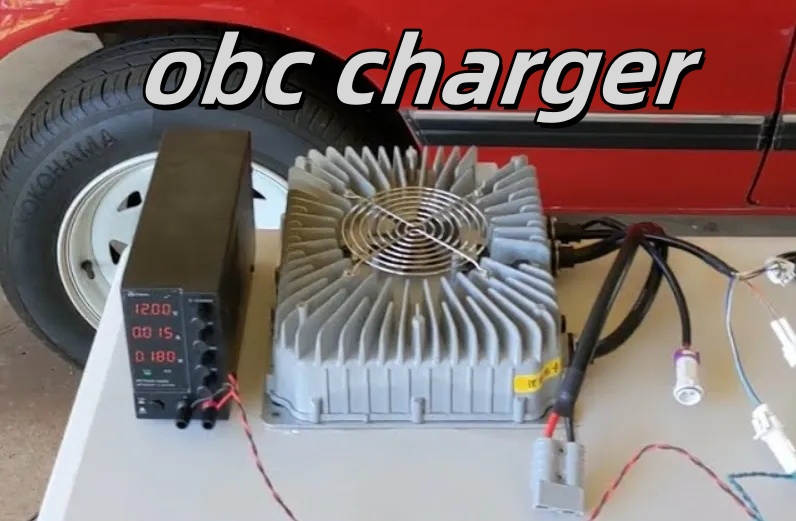The rapid advancement of electric vehicle (EV) technology has brought increased attention to the sophisticated systems that ensure reliable operation. Among these systems, the on-board charger (OBC) serves as a fundamental component, not only for charging the primary traction battery but also for maintaining the often-overlooked starter battery. This article explores the dual role of OBCs in EV power systems, with particular emphasis on their application for starter battery maintenance.

An on-board charger is an integrated power electronics unit that converts alternating current (AC) from external charging stations or household power sources into direct current (DC) for storage in the vehicle's high-voltage battery pack. This conversion process is critical because EV batteries can only store energy in DC form.
Modern OBCs incorporate intelligent charging algorithms, thermal management systems, and safety mechanisms to optimize charging efficiency while preventing overcharging, overheating, and electrical faults. Their ability to accommodate different power inputs (Level 1, Level 2, and in some cases, fast-charging compatibility) makes them a versatile component in EV charging architecture.
While EVs primarily rely on their high-voltage battery packs for propulsion, most models still retain a 12V auxiliary battery—commonly referred to as a starter battery. This secondary battery powers essential systems such as:
● Vehicle ignition and startup sequences
● Lighting, infotainment, and onboard computers
● Safety systems (e.g., ABS, airbag controllers)
Unlike traditional internal combustion engine vehicles, where the alternator continuously recharges the 12V battery, EVs rely on the OBC and DC-DC converter to maintain the auxiliary battery's charge.
The integration of starter battery maintenance into the OBC's functionality offers several key benefits:
1. Seamless Charging Integration
● The OBC ensures that whenever the main battery is charged, the 12V system also receives appropriate charging support.
● Eliminates the need for separate external chargers, reducing complexity for EV owners.
2. Optimized Charging Efficiency
● Smart charging algorithms adjust voltage and current delivery based on battery state-of-charge (SoC) and temperature.
Prevents undercharging (which can lead to sulfation) and overcharging (which accelerates degradation).
3. Enhanced Reliability in Extreme Conditions
● Cold weather can significantly reduce starter battery performance. The OBC's regulated charging helps maintain optimal voltage levels, ensuring reliable starts.
● Proactive monitoring prevents deep discharge cycles that could otherwise leave the vehicle unable to power up critical systems.
While OBCs provide primary charging support, certain scenarios may necessitate the use of a dedicated 12V battery charger:
● Long-Term Vehicle Storage – Maintaining charge during extended inactivity prevents battery drain.
● Battery Replacement/Recalibration – Some chargers offer conditioning modes to restore deeply discharged units.
● Diagnostic Testing – Specialized chargers can assess battery health independently of the vehicle's systems.
When selecting an external charger, compatibility with lithium-ion or absorbent glass mat (AGM) batteries (common in EVs) is essential to avoid damage.
To maximize the lifespan and reliability of an EV's auxiliary battery:
● Avoid Frequent Deep Discharges – Even with OBC support, repeated full discharges degrade lead-acid/Li-ion batteries.
● Monitor Warning Indicators – Many EVs alert drivers to 12V system issues before failures occur.
● Preemptive Replacement – Starter batteries typically last 3–5 years; proactive replacement prevents unexpected failures.
As electric vehicles grow more advanced, the on-board charger's role extends beyond merely replenishing the traction battery. By incorporating intelligent 12V battery maintenance, OBCs enhance overall vehicle reliability while reducing owner maintenance burdens. Future developments may see deeper integration between these systems, possibly eliminating separate 12V batteries altogether. Until then, understanding and maintaining this critical subsystem remains vital for uninterrupted EV operation.
For EV owners, recognizing the OBC's dual function underscores the sophistication behind modern electric drivetrains—where even "secondary" components play pivotal roles in delivering a seamless driving experience.
Next:CATL and BASF Establish Global Partnership for Cathode Active Materials
Previous:HiTHIUM Wins 720MWh UK Energy Storage Contract, Powering Nation Renewable Shift
Contact Person: Miss. Kiki
| WhatsApp : | +8617763224709 |
|---|---|
| Skype : | +8617763224709 |
| WeChat : | +8617763224709 |
| Email : | kiki@lifepo4-battery.com |